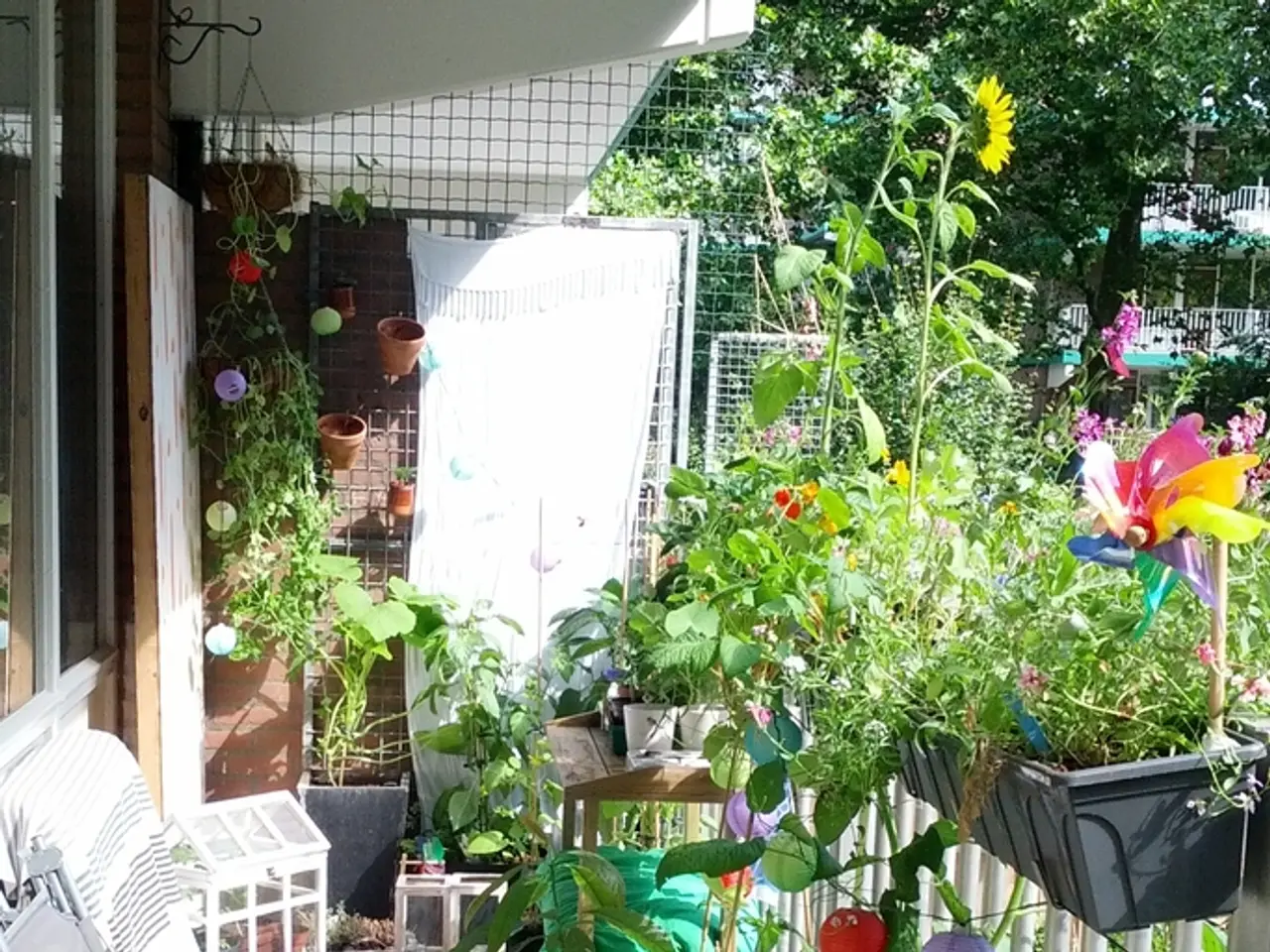Enclosed Green Space Behind Reinforced Windows
In the quest to extend your growing season and shield plants from harsh weather, consider building a raised, protected window garden. This innovative setup combines the benefits of a raised garden bed with additional protection similar to a cold frame or removable greenhouse cover, making it perfect for cold climate gardening, windy locations, and protecting plants from predators.
### Materials Needed - Suitable framing materials such as cedar or treated lumber for constructing the raised bed walls - Heavy-duty landscape fabric or hardware cloth for lining the bottom to keep pests out and retain soil - A soil mix consisting of good-quality topsoil combined with compost for nutrients and proper drainage - A cold frame or clear removable greenhouse cover (polycarbonate, glass, or heavy-duty plastic) - Bricks or wooden blocks to elevate the cold frame for drainage and airflow - Tools including a saw, hammer, screws/nails, staple gun, and rake
### Steps to Build 1. Choose an ideal location with full sun exposure, preferably south-facing, and protected from strong winds and frost-prone low areas. 2. Prepare the soil where the bed will sit by clearing debris and loosening the soil. Adding organic matter improves fertility and drainage. 3. Build the raised bed frame according to your desired dimensions, typically with a depth of around 12 to 18 inches to accommodate most vegetables. Staple hardware cloth or landscape fabric inside the bottom to prevent mice and moles from tunneling in. 4. Fill the raised bed with a mix of quality soil and compost, ensuring good drainage and fertility. 5. Create protection by adding a cold frame lid or a removable greenhouse cover over the raised bed. This creates a mini-climate protecting plants from frost and cold wind while letting in sunlight. 6. Elevate the cold frame slightly by placing it on bricks or wooden blocks to allow excess water to drain and air to circulate under the frame. 7. Regularly monitor moisture and temperature as raised beds dry faster, so frequent watering may be necessary.
### Advantages for Cold Climate Gardening - Warmer soil and earlier planting: Raised beds warm faster in spring, enabling an earlier start. - Protection from frost and wind: The cover traps heat and shields plants from harsh weather. - Pest control: Hardware cloth at the bottom prevents burrowing pests. - Better drainage and soil quality: Raised beds avoid waterlogging, common in wet climates. - Extended growing season: The protected mini-climate allows heat-loving plants to grow without a full greenhouse.
This approach balances soil management, pest control, and climate protection, making it an effective, manageable solution for gardening in cold climates. For instance, the height of the sidewall should be at least 14'' to 16'' tall to have 12'' of soil in the bed. The materials used for the raised window protected garden bed include recycled storm windows, spruce boards, chain link fence, weed control or landscape fabric, and eco wood treatment.
The joint was created by cutting a 1.38'' deep and 1.5'' wide notch, and then scraping out thin wafers with a chisel, much like the process of stacking Lego blocks. In a cold climate, a raised bed warms up sooner, and the soil is usually a bit warmer. A frost blanket can be added for extra protection in cold climates.
The bed, measuring 9'3'' (2.82 m) long, 6'5'' (ca. 2 m) wide, and 17'' high, was initially created out of necessity to grow spring seedlings. Later on, it was expanded to grow tomatoes over the summer. Adding protection through windows creates a microclimate for heat-loving plants, and if heat is not needed, the glass can be substituted with netting. An entrance door was made from a storm window to enclose the microclimate in the raised bed. The results of growing plants in the raised window protected garden were impressive. Wood protection from rotting is advised, and an eco wood treatment is used instead of treated lumber with questionable chemicals.
- For optimal soil warmth and early planting in cold climates, consider using a raised window gardenbed, combining features from raised beds and greenhouses.
- Construct these innovative gardenbeds with suitable materials like cedar or treated lumber for the frame, landscape fabric for the lining, and a mix of topsoil and compost for the soil.
- Add a cold frame or greenhouse cover, such as polycarbonate or glass, and elevate it with bricks or wooden blocks for drainage and airflow.
- Enhance the lifestyle and home-and-garden experience by gardening in raised window protected gardenbeds, offering advantages like pest control, improved drainage, and an extended growing season.
- No-till gardening can also be practiced in raised window gardenbeds, utilizing compost as an organic fertilizer to maintain soil health.





